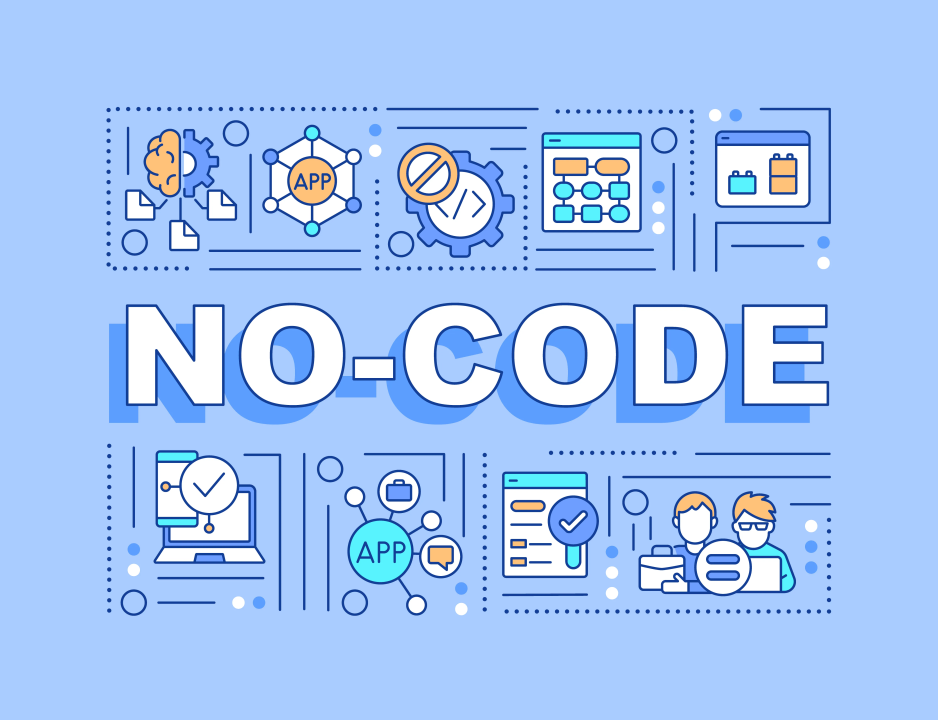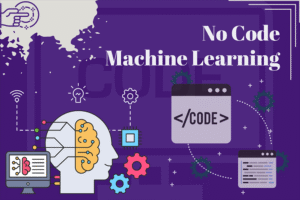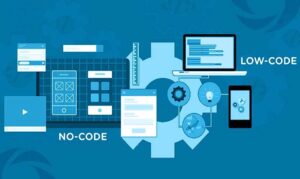No-Code ML: Democratizing Machine Learning for Everyone
Introduction
Machine learning (ML) has long been considered a domain for data scientists, programmers, and AI researchers. For decades, if you wanted to build a machine learning model, you needed strong programming skills, mathematical expertise, and knowledge of frameworks such as TensorFlow, PyTorch, or scikit-learn. This barrier kept ML development limited to highly skilled professionals and organizations with deep technical expertise.
However, with the rise of No-Code Machine Learning (No-Code ML) platforms, the landscape has dramatically changed. These platforms allow users—whether business analysts, marketers, educators, or entrepreneurs—to build, train, and deploy machine learning models without writing a single line of code. In other words, No-Code ML is making AI accessible to everyone, regardless of their technical background.
This article explores what No-Code ML is, how it works, its benefits, limitations, and the platforms driving its adoption. We’ll also look at real-world applications and the future of no-code approaches in machine learning.
What is No-Code Machine Learning?
No-Code ML refers to platforms and tools that allow users to create, train, and deploy machine learning models using graphical interfaces, drag-and-drop features, and automated workflows instead of traditional programming.
Instead of manually coding algorithms or writing scripts to preprocess data, users interact with visual dashboards where tasks like:
-
Importing data
-
Cleaning and preprocessing
-
Choosing algorithms
-
Training models
-
Evaluating accuracy
-
Deploying models
…are handled through simple clicks and configurations.
In short, No-Code ML abstracts the complexity of coding and mathematics, allowing non-technical professionals to harness the power of machine learning for decision-making and problem-solving.
Why No-Code ML is Rising
Several factors are fueling the adoption of No-Code ML:
-
Data Explosion
Every industry is generating vast amounts of data—customer records, sensor data, financial transactions, medical histories, and more. Making sense of this data requires ML, but the shortage of skilled data scientists makes automation critical. -
Democratization of AI
Businesses want employees across departments—not just data scientists—to leverage ML insights. No-Code ML enables subject matter experts to build solutions without technical expertise. -
Rapid Experimentation
Traditional ML development is time-consuming. No-Code ML accelerates prototyping, testing, and deployment, making it ideal for startups and fast-moving industries. -
Lower Costs
Hiring skilled ML engineers is expensive. No-Code ML reduces dependence on specialized talent, allowing smaller organizations to access AI affordably.
How No-Code ML Works
At its core, No-Code ML automates the end-to-end machine learning workflow. Here’s a breakdown of the typical process:
1. Data Input
Users upload structured (tables, CSV, Excel) or unstructured (images, text, audio) data directly into the platform.
2. Data Cleaning & Preprocessing
No-Code ML tools automatically handle missing values, normalize data, remove outliers, and encode categorical variables. Some platforms even suggest transformations for optimal model accuracy.
3. Model Selection
The system automatically tests multiple algorithms (decision trees, random forests, logistic regression, neural networks, etc.) and picks the best-performing one based on accuracy, precision, recall, or other metrics.
4. Training & Testing
Users can split data into training and testing sets with a simple slider, and the platform runs model training in the background.
5. Evaluation
The platform generates performance metrics, visualizations, and explanations in plain language, making it easy to understand results without deep statistical knowledge.
6. Deployment
Once satisfied with performance, users can deploy the model into production as an API, integrate it with apps, or export results for decision-making.
Benefits of No-Code ML
No-Code ML offers several advantages that make it a game-changer for organizations:
1. Accessibility
Anyone with domain expertise—but no programming knowledge—can build ML models. For example, a doctor can use No-Code ML to predict patient outcomes without coding.
2. Speed
Prototyping that once took weeks can now be done in hours or even minutes. This rapid experimentation drives innovation.
3. Cost-Effective
Organizations can save on hiring expensive ML engineers for small to mid-sized projects.
4. Transparency
No-Code ML platforms often provide explainable AI (XAI) features, making predictions interpretable for non-technical users.
5. Cross-Departmental Usage
Marketing, HR, sales, supply chain, and finance teams can independently leverage ML insights without waiting for IT or data science teams.
Limitations of No-Code ML
Despite its promise, No-Code ML is not a silver bullet. Some key limitations include:
-
Lack of Customization
Predefined workflows limit flexibility. Advanced customization (e.g., tuning hyperparameters) may be restricted. -
Scalability Issues
Many platforms are best suited for small to medium datasets. Extremely large datasets may require traditional coding approaches. -
Over-Reliance on Automation
Users may blindly trust model results without understanding underlying assumptions, which can lead to poor decisions. -
Limited Algorithm Choices
No-Code ML platforms often provide only a subset of algorithms compared to full ML libraries. -
Data Privacy Concerns
Uploading sensitive data to cloud-based platforms can raise compliance and security risks.
Popular No-Code ML Platforms
Several companies are leading the charge in making ML accessible through no-code solutions:
-
Google Cloud AutoML
Provides automated ML for vision, language, and tabular data. -
Microsoft Azure ML Studio
Drag-and-drop interface for building and deploying ML models. -
DataRobot
Enterprise-grade AutoML platform with explainable AI features. -
H2O.ai Driverless AI
Automates feature engineering, model selection, and deployment. -
Lobe (Microsoft)
A beginner-friendly tool for training computer vision models with images. -
Teachable Machine (Google)
Simplified ML for image, sound, and pose recognition—often used in education. -
RapidMiner
Visual workflow designer for data science and ML projects. -
Akkio
Aimed at business teams for rapid ML deployment.
Real-World Applications of No-Code ML
1. Healthcare
-
Predicting patient risks
-
Diagnosing diseases using images
-
Forecasting hospital admissions
2. Finance
-
Fraud detection
-
Credit risk scoring
-
Customer churn prediction
3. Marketing
-
Customer segmentation
-
Campaign optimization
-
Sentiment analysis from social media
4. Retail
-
Demand forecasting
-
Inventory management
-
Personalized product recommendations
5. Manufacturing
-
Predictive maintenance
-
Quality control via image recognition
-
Supply chain optimization
6. Education
-
Personalized learning paths
-
Student performance prediction
-
Automated grading systems
7. Human Resources
-
Resume screening
-
Employee attrition prediction
-
Workforce planning
The Future of No-Code ML
The rise of No-Code ML doesn’t mean traditional data scientists will become obsolete. Instead, it signals a shift toward collaborative AI development:
-
Data scientists will continue to handle complex problems, large datasets, and advanced model customization.
-
Non-technical professionals will use No-Code ML for everyday decision-making, freeing up technical teams for high-value tasks.
Key future trends include:
-
Integration with Business Tools
No-Code ML platforms will integrate seamlessly with CRM, ERP, and productivity apps. -
Improved Explainability
More robust explainable AI features will build trust in automated systems. -
Hybrid Approaches
Platforms will allow partial coding (low-code) for customization while maintaining accessibility. -
Edge Deployment
No-Code ML models will increasingly be deployed on edge devices for IoT and real-time use cases. -
AI-as-a-Service Expansion
Cloud providers will continue offering ready-made APIs for vision, speech, and NLP tasks, further simplifying ML adoption.
Conclusion
No-Code ML is democratizing access to machine learning by lowering entry barriers and empowering non-technical users. From healthcare to retail, industries are leveraging these platforms to make smarter, data-driven decisions without depending entirely on coding experts.
While limitations around customization, scalability, and security remain, the benefits far outweigh the drawbacks for many use cases. As the technology evolves, we can expect more powerful, flexible, and transparent tools that bridge the gap between technical experts and everyday business users.
Ultimately, No-Code ML is not about replacing data scientists but amplifying the reach of machine learning—making AI a tool for everyone, not just the technically skilled.
https://bitsofall.com/https-yourwebsite-com-improved-understanding-of-language-models/
Automated Machine Learning (AutoML): Revolutionizing the Future of AI Development






